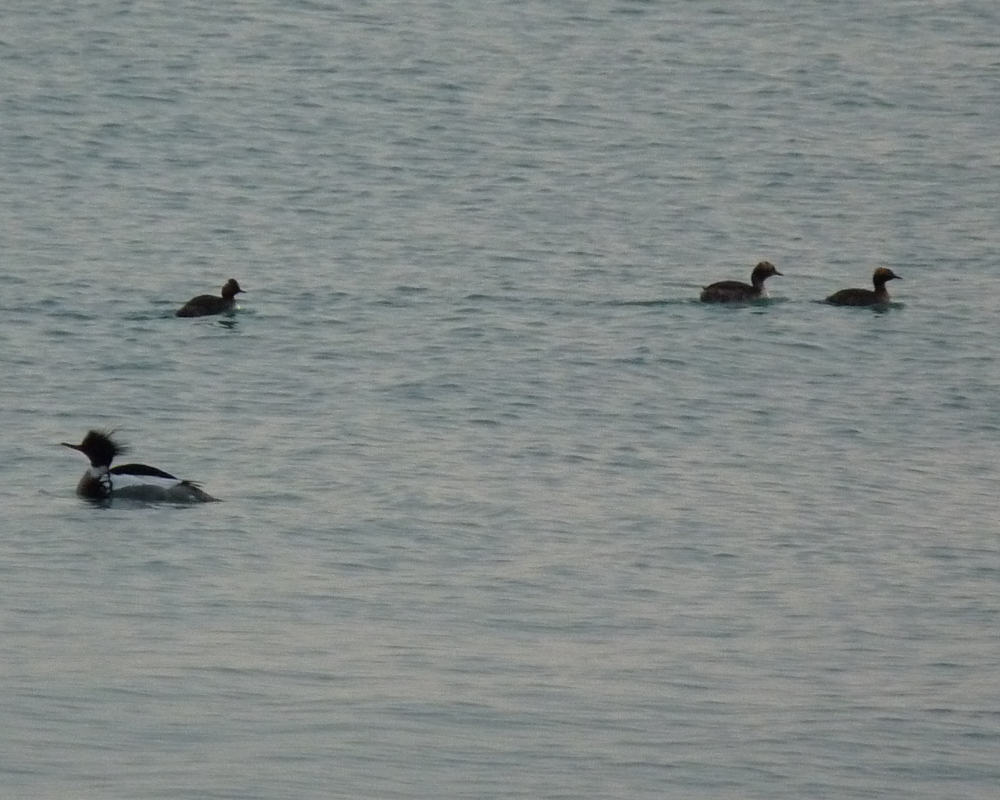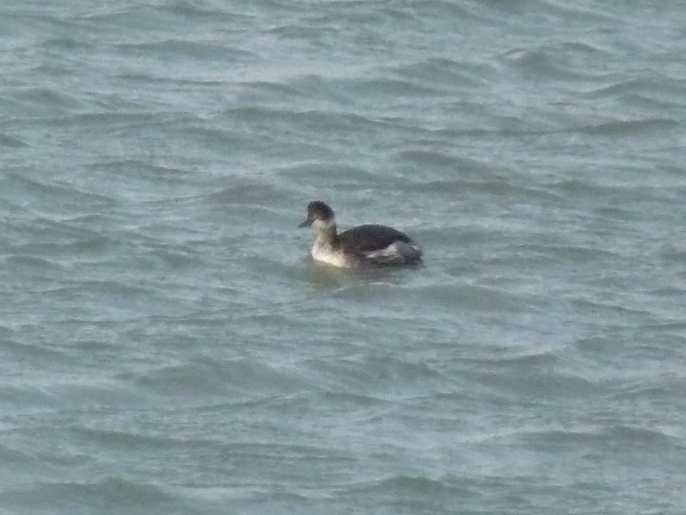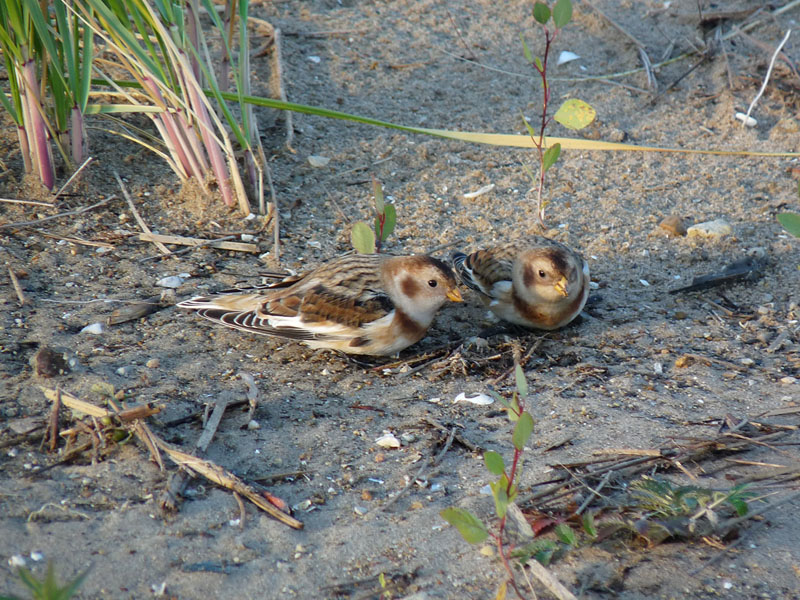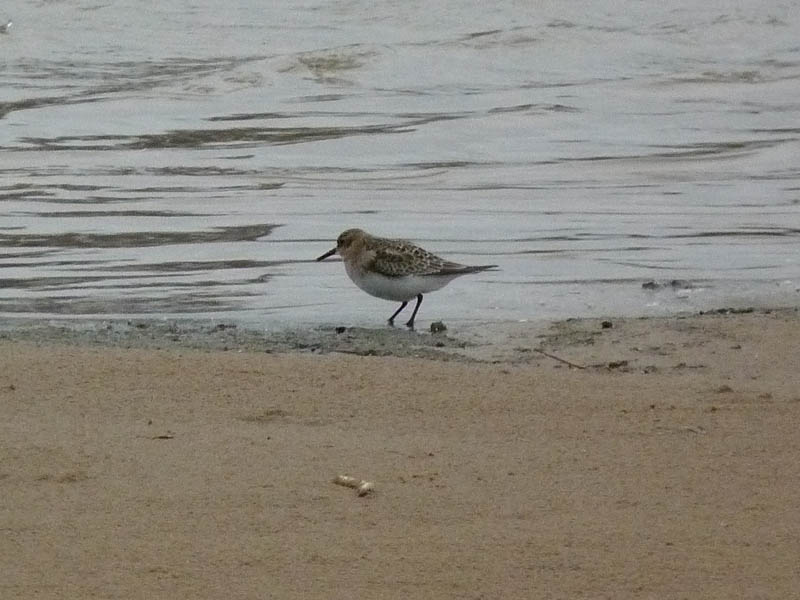An obliging Eared Grebe was a pleasant surprise on February 25. The bird was inside the “hook” of the long fishing pier that extends out into Lake Michigan at the east end of the beach. Two Horned Grebes were nearby but the Eared wasn’t associating with them. Late winter Eared Grebes are very rare at Montrose – I’m struggling to remember if I’ve ever seen one there at this time of the year. Is this bird an early migrant or did it overwinter on Lake Michigan? Hard to say.
Tag Archives: Grebes
Fishing Lines and Diving Birds
One of the most distinctive sounds of spring at Montrose is the firing of fishing lines. Fishermen use fire extinguishers fitted with a pipe to propel their lines out into Lake Michigan. This setup functions like a canon, and the sound it makes is loud enough to startle you if you’re nearby. I’ve also noticed how close some waterbirds come to these fishing lines. I’ve seen Horned Grebes, Red-breasted Mergansers, and a Common Loon on one occasion swim right up to the lines. These birds may have been curious and looking for an easy meal. I can imagine a grebe or merganser getting tangled or grabbing the baited hook, which would be a mess for the fisherman and the bird. A tangled and thrashing Common Loon would be a worst case scenario. Loons are big enough and strong enough to do serious damage to a human trying to free them. They have sharp bills that can draw blood or poke out an eye. My guess is that fishermen would cut the line and lose their bait rather than try to free a struggling bird.
April 11, 2022 – Fantastic Day

Eared Grebe (upper left) with 2 Horned Grebes and a Red-breasted Merganser (click to see the larger version)
April 11 lived up to the billing and turned out to be an exceptional day for migrants, with about 80 species reported to eBird. The south winds overnight brought in a lot of birds, as south winds usually do in spring. Northern Flickers and Hermit Thrushes were conspicuous by their numbers. Bird of the day goes to the nearly full breeding plumaged Eared Grebe on Lake Michigan near the base of the fishing pier. The bird was close to shore and conveniently associating with a group of Horned Grebes for comparison. Eared Grebes are rare and not annual at Montrose. Other goodies include Merlin, Short-eared Owl, Eurasian Collared-Dove, and the late continuing male Long-tailed Duck along the fishing pier. Link to my eBird checklist for the morning below.
eBird Checklist
April 11, 2022
November Cometh
November is one of the most exciting months of the year at Montrose. The list of rarities found there in November is long and distinguished. As examples, an Ancient Murrelet, just the fourth record for Illinois, made an appearance in 2019, and in 2020 the fourth state record Cassin’s Sparrow delighted birders. General birding can be good too. Here are a few November birding tips:
- Check the beach and Dunes for Lapland Longspurs and Snow Buntings. The buntings favor the more open areas of the Dunes, and the longspurs are usually flying over. Both will sometimes feed out in the open on the beach or even in the algae that washes up on the beach.
- On days with brisk west winds, Short-eared Owls are a good bet in the Dunes. They usually kick up out of the denser vegetation and fly out over Lake Michigan.
- With a little effort and luck, Northern Saw-whet and Long-eared Owls can be found in the peripheral plantings. Look for whitewash and listen for scolding, excited Black-capped Chickadees.
- The fishing pier is an excellent place to scan Lake Michigan for loons, grebes, and waterfowl, either resting on the surface or in flight. Overcast days with light winds offer the best viewing conditions.
- Northern Shrikes like the Dunes and more open areas of the Point. Look for them perched in the tops of trees or flying through, flashing their white wing and tail spots.
- Black-legged Kittiwakes sometimes turn up, especially on days with northeast winds. They aren’t a sure bet but if you’re at Montrose on a day with easterly winds, pay attention to the gulls flying by. This applies for jaegers too.
See the Montrose Glossary page for descriptions of the locations mentioned above.
Harlequin Duck, Black Scoters, Red-necked Grebe, Piping Plover, and Baird’s Sandpipers, November 4, 2018
I wasn’t even going to bird this morning (November 4) because of rain in the forecast, but when I looked out my window at 7:30 I saw no rain, so I grabbed my gear and headed over to Montrose. I tallied a whopping 20 species for my effort, unimpressive even by early November standards. But, BUT, 25% of that tally consisted of good birds – Harlequin Duck (off the end of the fishing pier, found by Krzysztof Kurlyowicz), Black Scoter (2 flybys, found by Steve Huggins), Red-necked Grebe (flyby), Piping Plover, and Baird’s Sandpiper. The Baird’s (2 juveniles) represent one of the latest records of this species for Montrose, continuing the trend for late birds started by the Piping Plover.
It’s hard to go wrong in November.
Link to my eBird checklist for the day below.
eBird Checklist
https://ebird.org/view/checklist/S49669117
March 19, 2016
I spent about 2.5 hours at Montrose this morning, March 19, most of that
time looking at the lake. The visibility was good and there were birds
to look at, both on the water and flying around. Except for blackbirds
and Robins, landbirds were scarce. My highlights (not a complete list):
Gadwall – ~12
American Wigeon – 5
Redhead – ~30
Lesser Scaup – ~20
Greater Scaup – 1
White-winged Scoter – ~20
Common Goldeneye – ~12
Bufflehead – ~7
Common Merganser – 1 adult male flying north
Red-breasted Merganser – ~300
Red-throated Loon – 2 flying north, both in basic type plumage
Common Loon – 1 alternate plumaged bird flying north
Horned Grebe – ~50, most on the lake but a few in the harbor
Eared Grebe – 1 alternate plumaged bird on the lake
Great Black-backed Gull – 1 first cycle
Glaucous/Iceland Gull – 1 near adult flying north
The Eared Grebe was a big surprise. I tried to turn it into something
more expected but everything about the bird said Eared Grebe. Somewhat
surprisingly it was in full alternate plumage; most of the Horned Grebes
today were still in basic plumage or transitioning into alternate
plumage. I also had a meadowlark in the Dunes that looked good for a
Western but I let it go.




